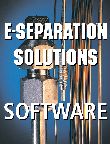Market Profile: Mass Spectrometry in North America and Europe
Despite a recent history of major innovation in many areas of the market, the position of mass spectrometry as one of the most powerful analytical techniques available and the cutting edge applications in which it is use seem to drive on the continuation of such a rapid pace of innovation and breakthroughs.
Despite a recent history of major innovation in many areas of the market, the position of mass spectrometry as one of the most powerful analytical techniques available and the cutting edge applications in which it is use seem to drive on the continuation of such a rapid pace of innovation and breakthroughs. The range of sub-technologies within the mass spectrometry market is incredibly diverse, including instruments as small as a toaster and as large as a car. The most basic mass spectrometer systems cost less than $5,000, while some of the priciest systems can easily break the $1 million mark.

Mass Spectrometry Demand in Europe and North America
Mass spectrometry techniques used most heavily in the life sciences are generally at the high end in terms of price and performance, and are responsible for driving such strong growth in the market. The technological innovations within LC/MS techniques including triple quadrupole, ion trap, Q-TOF and FT-MS during the past five years have been revolutionary, and give researchers the tools to garner far more information than ever before.
However, it is not only the life sciences where mass spectrometry has made its mark. GC/MS and ICP-MS, as well as general-purpose LC/MS techniques are very popular for non-life science applications, such as environmental testing, agriculture, and food and petrochemicals. Activity in all of these industries has accelerated significantly over the past year or two, and in most regions of the world.
Demand from security, military and other in-field applications for mass spectrometry is quite significant, and includes both IMS and portable/in-field mass spectrometry. Both markets are very dynamic, with some product lines and system configurations waning in popularity, but others are rapidly rising to take their place.
Mass spectrometry has developed over the course of more than a century from a very crude instrument intended for basic research applications into a more than $2.0 billion global market in 2006 that consists of end-users in a vast array of industries and applications. In fact, the limited application range of early MS technologies has grown to include an extremely diverse range of analytical methods. Overall, the demand for mass spectrometry will continue to be strong well into the future thanks to continued innovation from instrument manufacturers to satisfy a seemingly insatiable demand from end-users.
The foregoing data was extracted and adapted from SDi's Market Analysis and Perpectives: Mass Spectrometry, Endless Choices for Ever Increasing Analytical Performance. For more information, contact Glenn Cudiamat, VP of Research Services, Strategic Directions International, Inc., 6242 Westchester Parkway, Suite 100, Los Angeles, CA 90045, (310) 641-4982, fax: (310) 641-8851, e-mail: cudiamat@strategic-directions.com

Regulatory Deadlines and Supply Chain Challenges Take Center Stage in Nitrosamine Discussion
April 10th 2025During an LCGC International peer exchange, Aloka Srinivasan, Mayank Bhanti, and Amber Burch discussed the regulatory deadlines and supply chain challenges that come with nitrosamine analysis.
Top Execs from Agilent, Waters, and Bruker Take the Stage at J.P. Morgan Healthcare Conference
January 16th 2025The 43rd Annual Healthcare J.P. Morgan Healthcare Conference kicked off in San Francisco earlier this week. Here’s what top executives from Agilent, Bruker, and Waters, discussed during the event.

.png&w=3840&q=75)

.png&w=3840&q=75)



.png&w=3840&q=75)



.png&w=3840&q=75)

